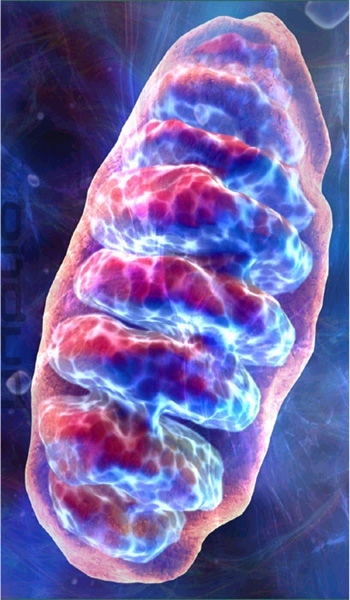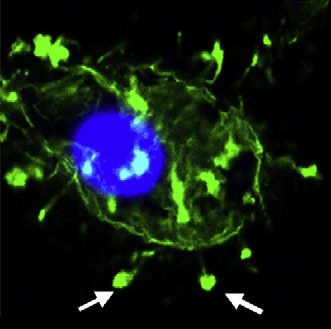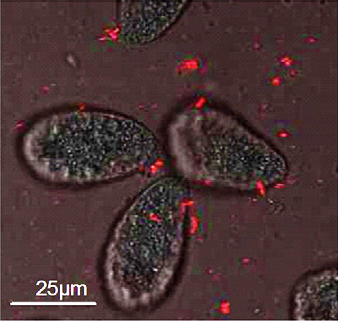An ancient union between cell and organelle has shown the first sign of fracture, challenging common conceptions of a primordial partnership all multicellular organisms rely on to live. Cornell researchers have recorded the first direct evidence of cells expelling intact mitochondria, the cellular machinery responsible for energy production.

Malfunctioning mitochondria produce free-radicals that damage cells, contributing to aging, mitochondrial myopathies, and disorders ranging from schizophrenia, bipolar disorder, and dementia to Parkinson’s disease and multiple sclerosis. The newfound breakup behaviour, described in Mitochondrion 2011 Nov.11(6), may be an early cell-survival strategy to escape the toxic effects of damaged mitochondria.
“It is very surprising to see living cells actively jettisoning vital parts of themselves,” said Dr. Theodore Clark, immunologist at the College of Veterinary Medicine. “This is the first time full mitochondria have been found outside cells and it may account for 15 years’ worth of unexplained data showing mitochondrial DNA and protein in extracellular spaces. We think these cells’ behaviour reveals a newfound survival tactic deeply rooted in evolution.”
Today’s mitochondria evolved from freewheeling bacteria that settled down in other cells two billion years ago. In exchange for food and shelter, the bacteria helped cells break nutrients into energy. These helpful tenants became modern mitochondria: the power-plants inside all cells of nearly every animal, plant, fungus, and protozoan.
Yet domestic disputes over cellular housekeeping may spur divorce, according to findings from Clark’s lab showing mitochondria moving out.
Graduate student Yelena Bisharyan discovered this while studying an unrelated phenomenon: escape stunts of the fish parasite Ichthyophthirius multifiliis. Clark’s lab had observed these parasitic protozoa avoiding destruction by shaking off attacking antibodies and exiting their hosts and wanted to see how they escaped.
“Attacking antibodies bind to the parasite’s cell surface,” said Clark. “We suspected that when antibodies attach, the parasite can shed them by breaking off its surface proteins – sort of like a lizard shedding its tail.”

Applying antibodies to parasites in culture, Bisharyan observed the reactions of Ichtyophthirius and Tetrahymena, another ciliated protozoan used as a model system to study fundamental biological principles across species.
Using negative staining and electron microscopy techniques, Bisharyan recorded parasites sacrificing their surface proteins to rid themselves of attached antibodies. Yet her images also captured something completely unexpected: intact and fragmented mitochondria coming out of the parasite’s cells.
This surprising finding won Bisharyan an invitation to present at one of the 2011 Gordon Research Conferences, a prestigious international forum showcasing major discoveries across scientific fields.
“Mitochondria experts were very excited to see this,” said Clark. “Over the past 15 years several papers have reported mitochondrial DNA and proteins floating outside mammalian cells. No one knew how or why they got there. What we’ve found in protozoa may help explain similar processes in mammals.”
Mitochondria (m) are pushed to the surface and jettisoned from the cell

Certain cellular stressors can trigger mitochondrial expulsion, according to Bisharyan’s study. In protozoa, for example, not only antibodies but also heat shock can induce this effect. These stressors elevate calcium levels within the cell, possibly damaging mitochondria and causing them to produce toxic free-radicals.
“Our hypothesis is that mitochondria become poisoned and these protozoa have found a way to rid themselves of the damaged powerplants before they can cause further harm,” said Clark. “We think their behaviour reveals an early adaption to cellular stress that other species may share.”
Mammals and fish parasites may bear little family resemblance these days, but a common ancestor may have equipped both with emergency mitochondria-removal systems. Understanding this process could illuminate new approaches to reducing mitochondria-induced damage in humans and other animals.
———-
Cornell University College of Veterinary Medicine news